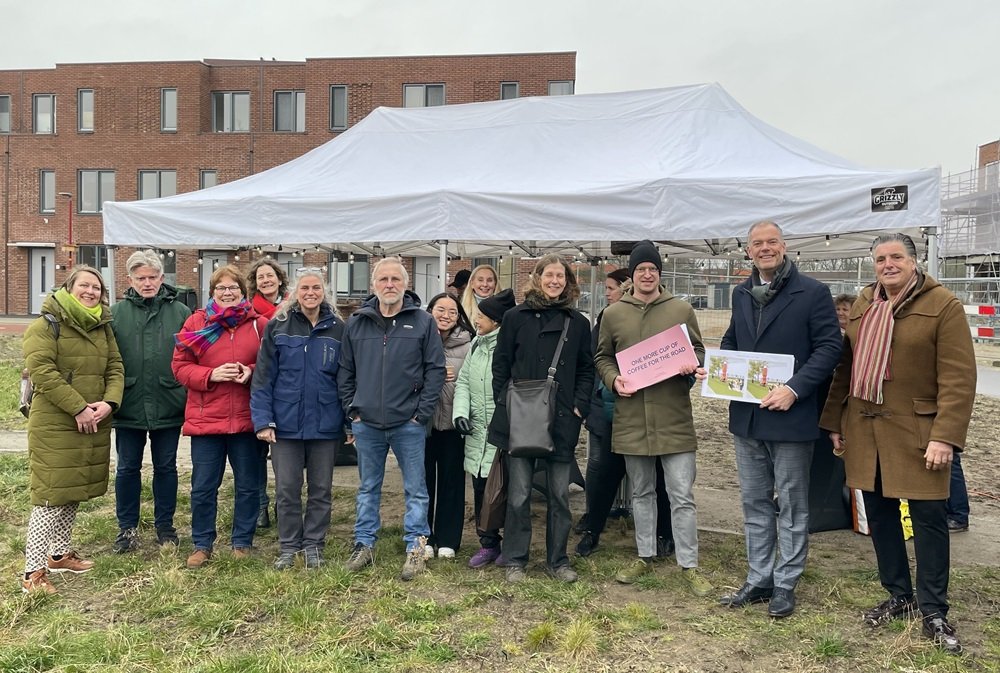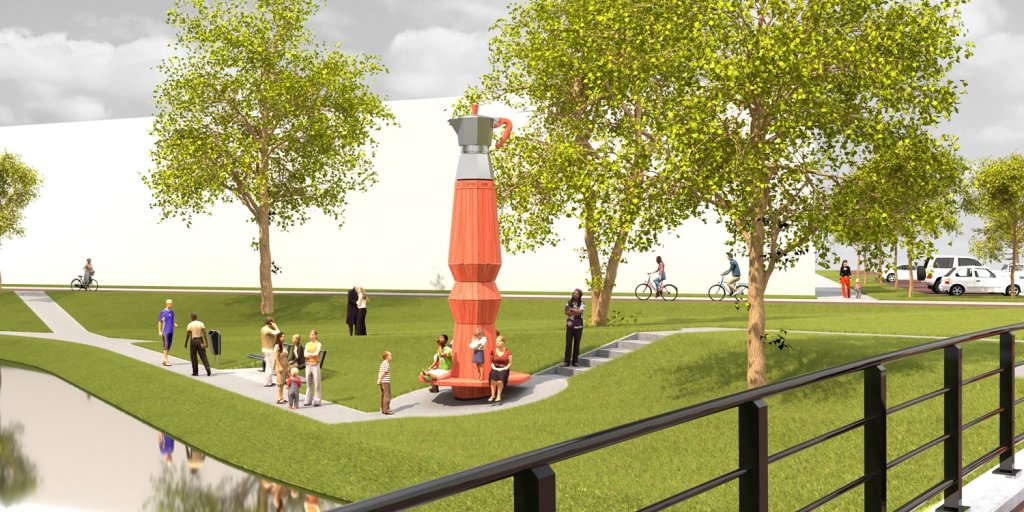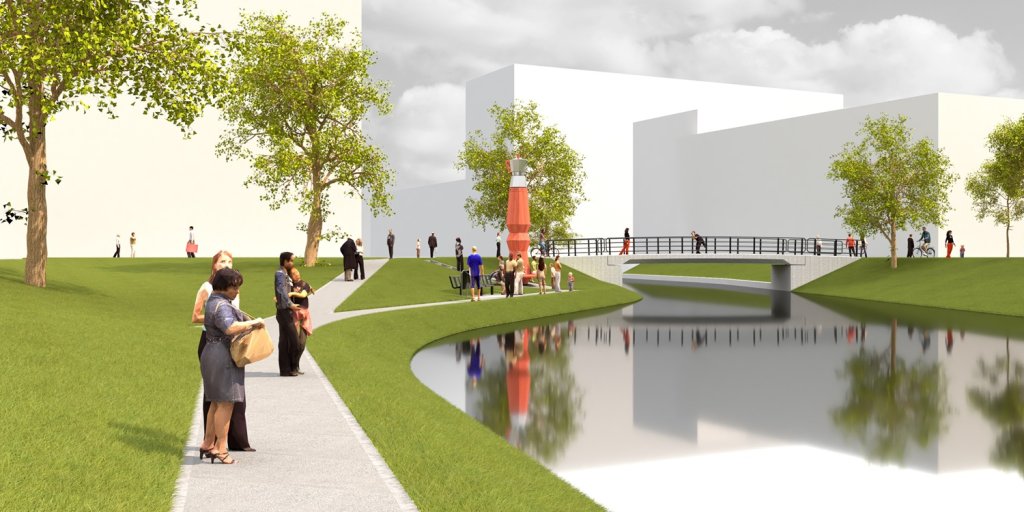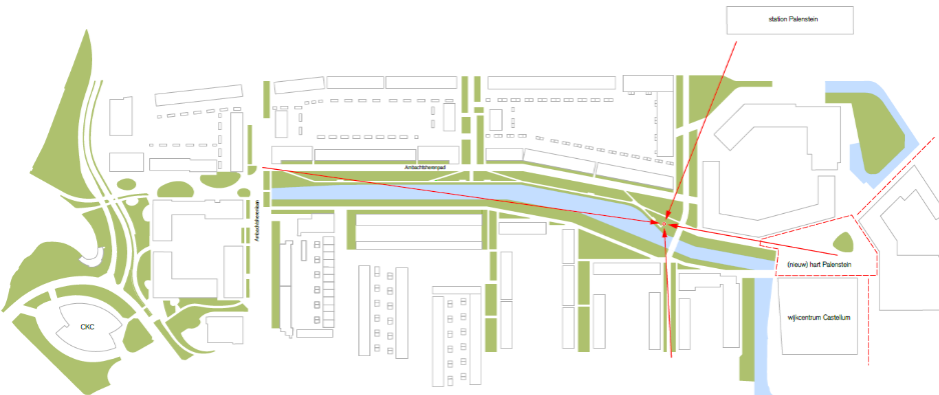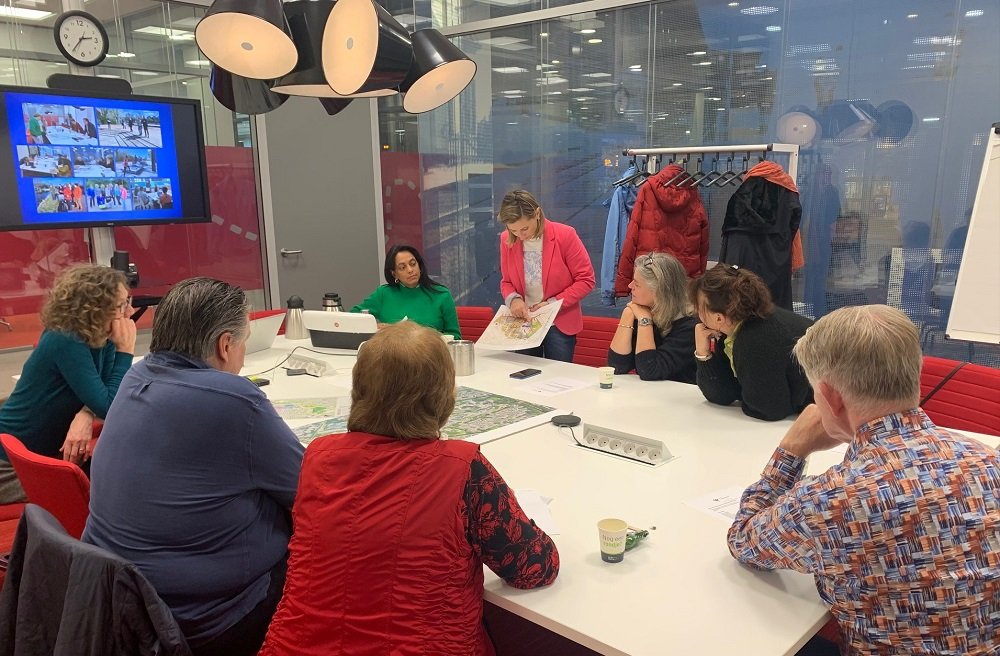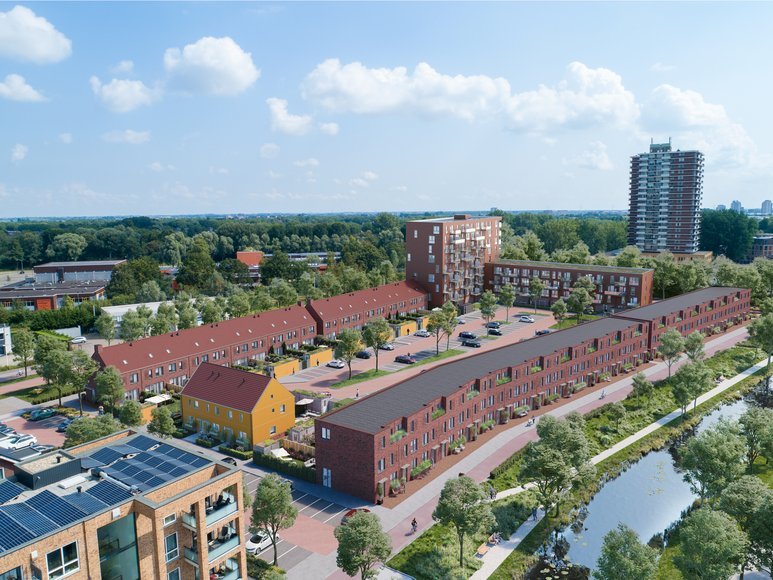New artwork for Palenstein
The artwork 'The Column of Palenstein' is ready and received a beautiful spot on Oct. 7 on the Singel opposite Ambachtsherenpad 51-57. 'The Column of Palenstein: One More Cup of Coffee for the Road' is a work of art by artist Q.S. Serafijn in collaboration with architect Jan Willem Terlouw. A work of art that is a landmark and meeting place in one. Inspired by the worldly custom of drinking coffee together every day. The official unveiling is on Nov. 5, 2025.
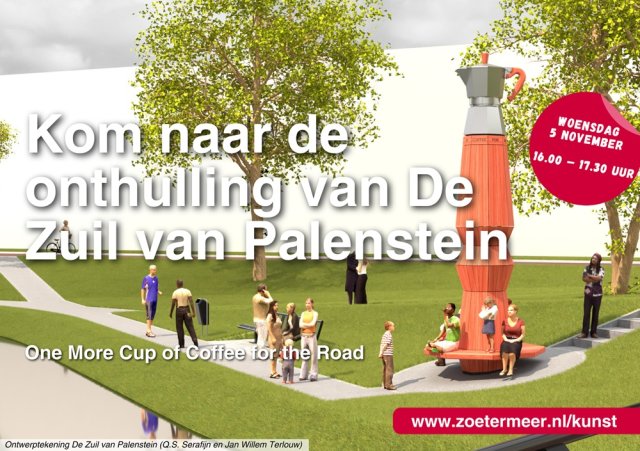
Design
The 6-meter-high artwork consists of an aluminum coffee pot and a pedestal with a bench surrounding it. The coffee pot has a simple, recognizable shape and is placed so that the spout points toward the old village. It subtly reflects the sky and surroundings. The pedestal is clad in durable wood and finished with a color stain that contrasts with the surroundings. The artwork symbolizes an ode to coffee, the coffee pot and togetherness.
Drinking coffee together
The world has different coffee traditions. The Dutch like to have a cup of coffee. Italians drink their espressos standing at the bar. Austria is best known for its Kaffeehäuser (coffee houses) where Austrians spend hours reading the newspaper and discussing new ideas with others. A coffee ceremony in Ethiopia is an important part of the social and cultural life of the country.
The coffee pot - the iconic Italian percolator moka hoisted on a pedestal - points to the cultural and social customs in various coffee cultures and the solidarity that comes with it. The percolator stands for simplicity, accessibility and the shared experience of a good cup of coffee. From a distance, the artwork marks the Palenstein district, from up close 'The column of Palenstein' invites you to take a moment of rest on the bench, with a view of the water and space for meeting and conversation.
Project group of residents
In the summer of 2024, residents of the art Palenstein project group chose from 4 different presentations "The Pillar of Palenstein: One More Cup of Coffee for the Road" by Q.S. Serafijn and Jan Willem Terlouw for the Singelpark. The project group was involved throughout the art project.
Artist QS Serafijn
During the assignment to create the idea, artist QS Serafijn passed away on June 1, 2024. Jan Willem Terlouw will continue the development of the design and its implementation in collaboration with the relatives of QS Serafijn.
QS Serafijn was a painter, sculptor and author. With the government as a client, he created various sculptures in public spaces, such as the D-Tower in Doetinchem and the dog Mannes for the station in Assen. He was seen as a beacon of light at the academies where he taught, because of his positivity, intelligence and humor.
QS Serafijn: "Art is fun. This is the fun: solving problems that don't matter. Artists who think their work affects the well-being of the world are idiots. Not right in the head, as they say at home. Art is pleasure. Pleasure-for-nothing. It keeps you healthy (if you're lucky). But above all, artists solve problems that don't matter. That's courageous."
Why a work of art
A work of art can mean a lot. It can be a meeting point or a striking landmark. It can have a story or a meaning. It can give recognition and connection between the people who use the place. A work of art must therefore be well attuned to the environment.
